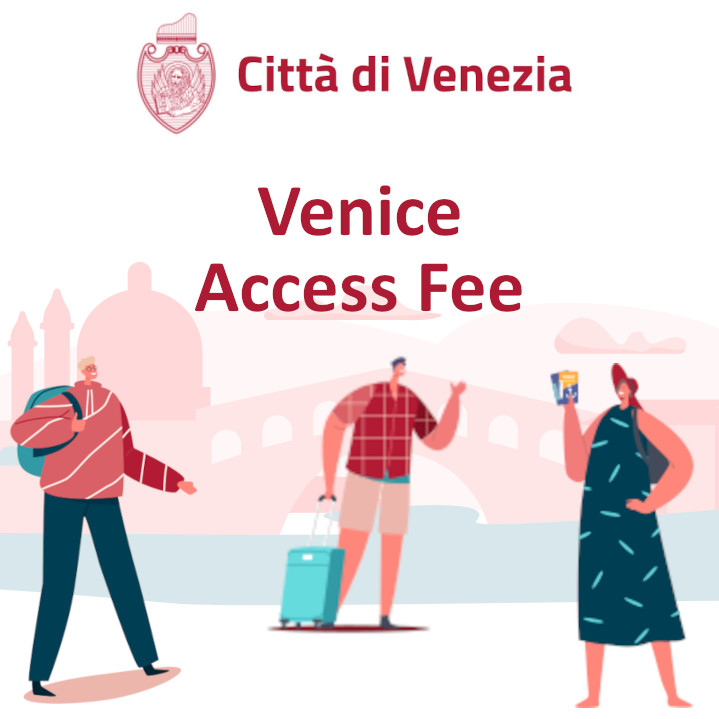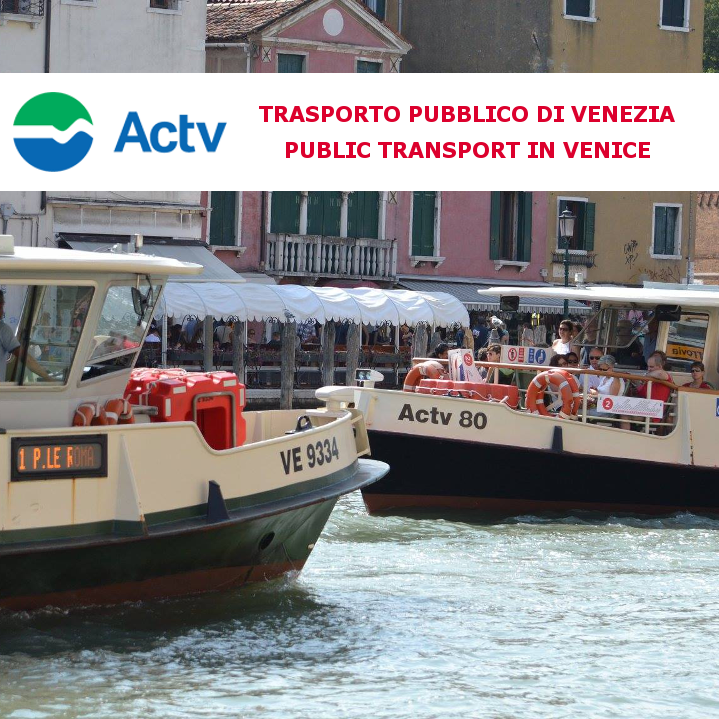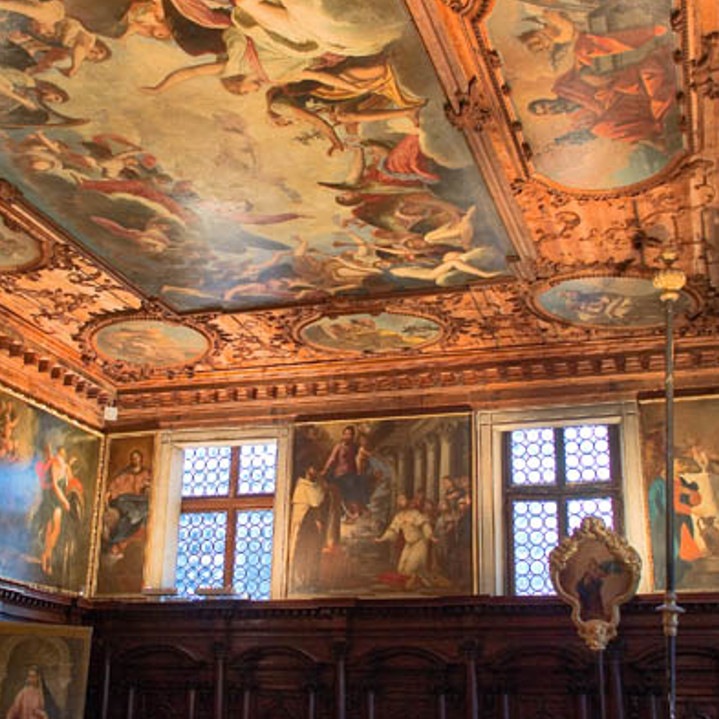You are here
Murano, Burano e Torcello
MURANO, BURANO AND TORCELLO; 
REDISCOVERING VENICE’S ANCIENT HISTORICAL BOUNDARIES
6th Itinerary
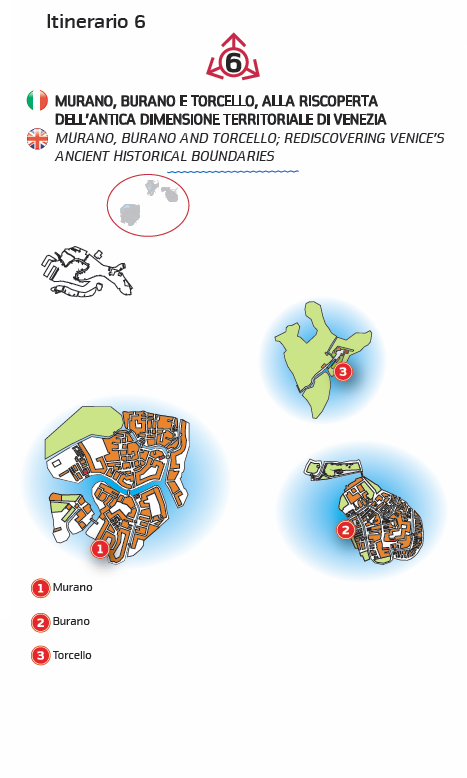 This itinerary takes you to the northern reaches of the lagoon, on a popular, albeit mandatory journey across the Venetian waters. However, the journey between Murano, Burano and Torcello is not the only “cross-water itinerary” in Venice, since other public transport routes have been created and improved, connecting the city with the islands of Certosa (which has been revitalised by a remarkable project involving the opening of a dockyard, a sailing centre and a branch of the European Design institute), San Servolo with its Venice international university, Sant’Erasmo and Vognole (both famous for the produce from their vegetable gardens), Lazzaretto Nuovo (the centre of archaeological projects and works conducted by the Archeoclub), and San Clemente, home to a luxury hotel. There is undoubtedly an historical reason for the fame boasted by the islands of Murano and Burano: these two important islands (famous for their glasswork and lacework) have been inhabited and economically active for centuries; while the origins of Venice can be traced back to the third of the trio, Torcello, which although currently inhabited by little more than a handful of people, boasts one of the oldest religious structures to be found anywhere in Europe. This itinerary gives the visitor an idea of ancient Venice’s geographical extension, covering both land and sea, which was to disappear during the course of the 19th century, when Venice was joined to the mainland via the railway bridge. All the “minor” islands not directly connected or close to the city center, found themselves cut off from economic life and human contact and were gradually abandoned by their inhabitants.
This itinerary takes you to the northern reaches of the lagoon, on a popular, albeit mandatory journey across the Venetian waters. However, the journey between Murano, Burano and Torcello is not the only “cross-water itinerary” in Venice, since other public transport routes have been created and improved, connecting the city with the islands of Certosa (which has been revitalised by a remarkable project involving the opening of a dockyard, a sailing centre and a branch of the European Design institute), San Servolo with its Venice international university, Sant’Erasmo and Vognole (both famous for the produce from their vegetable gardens), Lazzaretto Nuovo (the centre of archaeological projects and works conducted by the Archeoclub), and San Clemente, home to a luxury hotel. There is undoubtedly an historical reason for the fame boasted by the islands of Murano and Burano: these two important islands (famous for their glasswork and lacework) have been inhabited and economically active for centuries; while the origins of Venice can be traced back to the third of the trio, Torcello, which although currently inhabited by little more than a handful of people, boasts one of the oldest religious structures to be found anywhere in Europe. This itinerary gives the visitor an idea of ancient Venice’s geographical extension, covering both land and sea, which was to disappear during the course of the 19th century, when Venice was joined to the mainland via the railway bridge. All the “minor” islands not directly connected or close to the city center, found themselves cut off from economic life and human contact and were gradually abandoned by their inhabitants.
MURANO - ROUTES 3, 4.1, 4.2, 12, 13, N Murano is the largest of the islands in the Lagoon. The first stop on the island, Navagero, is a journey of about 10 minutes by public transport from Fondamente Nuove: we suggest you get off here and visit the island on foot. There are a number of glassworks and shops situated along the Rio dei Vetrai, in the heart of Murano, and no journey would be complete without a visit to this part of the island. As in the case of Venice itself, visitors need to be careful when purchasing goods to ensure that they are being sold truly local products. The origins of Murano go back to Roman times, when groups of families fleeing the Roman towns of Altino and Oderzo (at the time of the Barbarian invasions) made the island their home. The island was originally called Amurianum (from the name of an ancient gate in the city of Altino), and over the course of the centuries it grew to become an important trading post and, with its gradual monopoly of glasswork, it was granted special privileges and honours by the government of the Venetian Republic. Murano had its own council bodies empowered to pass legislation, together with a police force, and the island could mint the famous “oselle” – commemorative medals in gold and silver constituting legal currency – the name taken from the old custom whereby the Doge offered game birds (in dialect osei) as gifts to local governing nobles. Towards the end of the 18th century, a decree was passed (as a result of the hazardous fires that used to break out) moving the glasswork furnaces from Venice to Murano. The consolidation of this ancient craft tradition was to prove the fortune of Venetian glass in Europe, particularly during the 16th century when the glassworks in Murano produced the most surprising technical and artistic creations, the result of constant experimentation that gave the world, among other things, the fine, transparent, almost impalpable crystal glass for which the island became so famous. At the height of its splendor, Murano became the “holiday” island for the rich and famous. The island’s former gardens and allotments (long since gone), known as “earthly paradises”, were the meeting place for famous artists and writers of the time. The island’s growth continued throughout the 19th century, and a significant development in building on Murano even witnessed the creation of several underground (buried) areas designed for the construction of new residential zones. If you look at the map you can see that the town plan is partly based on that of Venice itself: there are nine islands joined by a long canal. Along the Rio dei Vetrai we can still see a number of medieval furnace-dwellings, which are recognizable from the fact that they are built on porticos and because of the still-visible layout of the rooms: there is the glassworks owner’s house, the workshop, and finally the warehouse where raw materials were kept. Towards the end of the fondamenta (the quay or wharf), on the left-hand side is the large Gothic church of San Pietro Martire (St. Peter the Martyr) and a little farther on, to the remarkable Palazzo Da Mula, with its façade covered in paterae and fragments from various different historical periods. Beyond the Ponte Longo (long bridge) we reach to Palazzo Giustinian with its baroque façade, once an episcopal palace and currently home to the Glass Museum founded in the late 19th century with the aim of collecting various items and artefacts attesting to the history of glass blowing and manufacture, together with a number of rare items from various collections (it is one of the city’s Civic Museums entrance concession with Rolling Venice card). If we continue along the quay beyond the Museum, we come to the Church of Saints Maria and Donato, one of the most famous religious buildings in the area, dating from 1140. The true façade of this church, famous for its apsidal section, is the one facing out across the water and characterized by a blend of architectural styles (Ravennate, Byzantine and Romanesque). The wonderful floor of the church, resembling an oriental carpet of marble and glass cameos and highly reminiscent of the mosaics in St. Mark’s Basilica, constitutes the original 12th century part. One interesting way of concluding the Murano itinerary is to visit a glassworks furnace and we suggest you get in contact with Promovetro (tel. +39 041 5275074), the Consortium set up to promote and valorize the image of Murano glass, by preserving, safekeeping and protecting the island’s thousand-year-old artistic glasswork tradition while promoting and overseeing the proper marketing of this important cultural heritage throughout the world.
BURANO - ROUTES 9, 12, N If you take the ferry from Venice’s Fondamente Nuove to Burano (journey time about 40 minutes) and to Torcello (route T Burano-Torcello), when you get to the island you get off the boat in a large, tree-lined square. From here, the suggested itinerary begins to wind between the variously-coloured houses, with the long wooden bridge joining Burano to Mazzorbo visible in the background. Burano appears different from any of the other islands: there are no buildings that stand out particularly, and most of the houses are of the same height (one or two floors), all with brightly-coloured façades. Colour takes on a collective importance here, while the gentle, rarefied nature of the island landscape have made it the ideal subject-matter for artists. The island of Burano was already inhabited during Roman times, just like the other islands in the Venetian lagoon, and it was to provide refuge for those fleeing Altino from the 7th century onwards; for much time thereafter it was part of the podesterate of Torcello. Its new inhabitants named it Boreana (a gate in the town of Altino situated facing in the direction of the Bora wind) and for centuries it led a quiet existence, until the coming to prominence of needle lacework during the 15th century, which was to become the island’s principle activity. Burano’s source of success was thus an extremely elegant craft product based upon original designs and “points” that had no rivals in Europe at that time, and that led the island’s womenfolk to produce lacework for Europe’s noblewomen and royalty. There are very few craft workers left capable of producing the famous “punto in aria” (an early form of Italian needle lace) stitched alone without the need for a fabric support (the name derives from the extreme lightness and the very thin thread of this type of lace). The entire itinerary as far as the square is flanked by many shops selling the lacework. Walking alongside the Rio di Mezzo down the San Mauro quay, you reach Via Baldassare Galuppi. Galuppi was Burano’s most famous citizen, and as such given the nickname of “Buranello”: he was an 18th century musician (1703-1785) who carried out a number of very important studies of music from that time. As well as the innumerable shop windows displaying lacework, the street is also lined with various confectioners and bakers selling bussolai, a local donutshaped pastry. Piazza Galuppi is the site of the 16th century Duomo (Cathedral) di San Martino and the 17th century Oratory of Santa Barbara, an ancient hospice, situated alongside it. The 16-17th century cathedral bell-tower rises up above the waters of the surrounding lagoon, characterized not only by its considerable height but also by its leaning appearance due to a partial subsidence of the foundations, since consolidated by specialized restoration work. The same square also features the only Gothic buildings of any importance on the island, with 14th century mullioned windows with three lights; one of these buildings was the seat of the island’s appointed potestate (or mayor). This building contains the offices of the Municipality and the Lace School and Museum, which tell a unique tale of the island’s history. The Lace School and Museum (part of Venice’s Civic Museum Circuit entrance concession with Rolling Venice card) in Palazzo Galuppi is the base for those women embroiderers who are trying to keep alive the tradition of high quality lace-making in the face of competition from synthetic imitation products. Modern designs are accompanied by ancient geometrical and figurative patterns and designs depicting flowers and animals; arabesque designs and interwoven patterns in the shape of corals, algae and lichens. The Museum houses a number of genuine masterpieces of lacework covering three hundred or so years of this ancient craft: altar cloths, children’s baptism garments, parasols, fans, slippers, all of which reveal their designed use; household furnishings and accessories; and above all a series of elegant, “fashionable” items of clothing of which lace trimmings were an indispensable part for centuries.
TORCELLO - ROUTE 9, N Coming from the lively, populated islands of Murano and Burano, or from Venice, when you get to Torcello, immerged in the solitude of the innermost part of the lagoon, you get the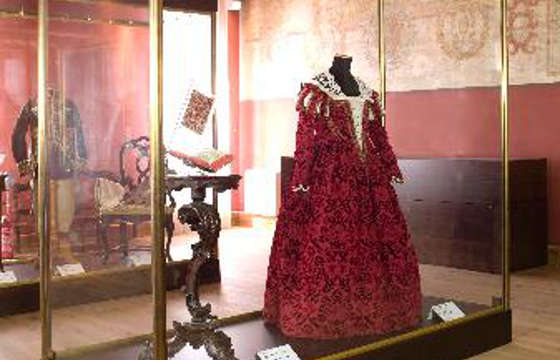 strange feeling of visiting a ghost town. As you get off the ferry, you have to follow the only itinerary available, namely the small road running alongside a canal (this is no calle, but just one long fondamenta) as it winds its way through a multitude of fields, past the very few dwellings on the island, until you get to a widening in the road leading into Torcello’s square, which in truth is nothing more than an irregularly-shaped grassy opening. This was where the town used to stand: green meadows and gardens now surround the few remaining monuments. The striking thing about Torcello is the contrast between the general appearance of a small village, partly cultivated and partly abandoned, and the architectural structures, some of which are truly sumptuous (the large church buildings), others merely disquieting (such as the Devil’s Bridge). These are important constructions which merely give a hint of what this ancient town must have once been like, with a population of 30,000 (this would appear to have been the population although some think it may have been as much as 50,000) justifying the construction of such an impressive religious complex, together with that of the only medieval bridge left standing. Today’s short itinerary to the island’s churches goes past the famous “Devil’s Bridge” (ponte del diavolo), a low hump-back bridge with no parapet, consisting of a series of wide steps (legend has it that it was built by the devil during the course of a night), several inns, a handful of houses and another bridge, before reaching the small square situated in front of a large marble seat entitled the “cariga de Atila” (Attila’s Throne), which is perhaps the seat from which the local authorities administered justice. The two small Gothic buildings standing in front of the churches, which were once the seat of government – the Palazzo dell’Archivio (entrance concession with Rolling Venice card) – still stand alongside a portico containing a series of funeral shrines and various fragments from Roman times, most of which come from the town of Altino. A visit to the Cathedral of Santa Maria Assunta is well worth a visit: this is perhaps the oldest of all Venetian monuments (it would appear to date from the 7th century), a good two centuries older than St. Mark’s Basilica. The Cathedral was rebuilt in the 9th century and then again in the 11th century, and it has preserved its appearance and bell-tower from this latter period. The bell-tower is a massive brick construct visible from afar. The church was lengthened and raised up higher, and a crypt was built beneath the presbytery. Two inspection covers enable the visitor to admire the remains of the ancient floor beneath the current one. The church combines elements of Venetian and Byzantine styles: the severe, unadorned exterior contrasts with the interior embellished by a series of mosaics and decorations: the marble transenna of the rood-screen, with plutei carved in the shape of peacocks and lions facing one another; the fretwork carved capitals; and in particular, the beautiful mosaics from various ages that clad the central apse and the entrance wall, the most outstanding of which being the figure of the Virgin Mary immersed in the golden bowl of the central apse, and the “mystic lamb” to its side, inspired by Ravennate compositions. Of all the mosaics present in the church. However, the one that really stands out is the famous Universal Judgement on the rear wall: this immense composition dates from between the 11th and 13th centuries and is the striking tale of those condemned to inferno, with the various “stages” of their punishment. The expressive description of this infernal apocalypse, which almost seems a page from the famous work by Dante, is thus translated into a severe moral warning to all churchgoers.
strange feeling of visiting a ghost town. As you get off the ferry, you have to follow the only itinerary available, namely the small road running alongside a canal (this is no calle, but just one long fondamenta) as it winds its way through a multitude of fields, past the very few dwellings on the island, until you get to a widening in the road leading into Torcello’s square, which in truth is nothing more than an irregularly-shaped grassy opening. This was where the town used to stand: green meadows and gardens now surround the few remaining monuments. The striking thing about Torcello is the contrast between the general appearance of a small village, partly cultivated and partly abandoned, and the architectural structures, some of which are truly sumptuous (the large church buildings), others merely disquieting (such as the Devil’s Bridge). These are important constructions which merely give a hint of what this ancient town must have once been like, with a population of 30,000 (this would appear to have been the population although some think it may have been as much as 50,000) justifying the construction of such an impressive religious complex, together with that of the only medieval bridge left standing. Today’s short itinerary to the island’s churches goes past the famous “Devil’s Bridge” (ponte del diavolo), a low hump-back bridge with no parapet, consisting of a series of wide steps (legend has it that it was built by the devil during the course of a night), several inns, a handful of houses and another bridge, before reaching the small square situated in front of a large marble seat entitled the “cariga de Atila” (Attila’s Throne), which is perhaps the seat from which the local authorities administered justice. The two small Gothic buildings standing in front of the churches, which were once the seat of government – the Palazzo dell’Archivio (entrance concession with Rolling Venice card) – still stand alongside a portico containing a series of funeral shrines and various fragments from Roman times, most of which come from the town of Altino. A visit to the Cathedral of Santa Maria Assunta is well worth a visit: this is perhaps the oldest of all Venetian monuments (it would appear to date from the 7th century), a good two centuries older than St. Mark’s Basilica. The Cathedral was rebuilt in the 9th century and then again in the 11th century, and it has preserved its appearance and bell-tower from this latter period. The bell-tower is a massive brick construct visible from afar. The church was lengthened and raised up higher, and a crypt was built beneath the presbytery. Two inspection covers enable the visitor to admire the remains of the ancient floor beneath the current one. The church combines elements of Venetian and Byzantine styles: the severe, unadorned exterior contrasts with the interior embellished by a series of mosaics and decorations: the marble transenna of the rood-screen, with plutei carved in the shape of peacocks and lions facing one another; the fretwork carved capitals; and in particular, the beautiful mosaics from various ages that clad the central apse and the entrance wall, the most outstanding of which being the figure of the Virgin Mary immersed in the golden bowl of the central apse, and the “mystic lamb” to its side, inspired by Ravennate compositions. Of all the mosaics present in the church. However, the one that really stands out is the famous Universal Judgement on the rear wall: this immense composition dates from between the 11th and 13th centuries and is the striking tale of those condemned to inferno, with the various “stages” of their punishment. The expressive description of this infernal apocalypse, which almost seems a page from the famous work by Dante, is thus translated into a severe moral warning to all churchgoers.
One curious feature of the church is the still-visible original shutters covering the slightly arched windows, constituted by large stone slabs. Alongside stands the Basilica di Santa Fosca, a central-plan church with no cupola (never built) surrounded by an octagonal portico dating from the 11-12th century. This church is thus from the same period as St. Mark’s Basilica. The church’s apses, which resemble those found in the church of San Donato on Murano, are of particular interest: two orders of blind arcades line the main apse, crowned by triangular “saw-tooth” terracotta decorations. Inside there is a rectangular hall that narrows towards the top: this bare space represents an expression of abstract sacredness, a fine balance between shape and light.



